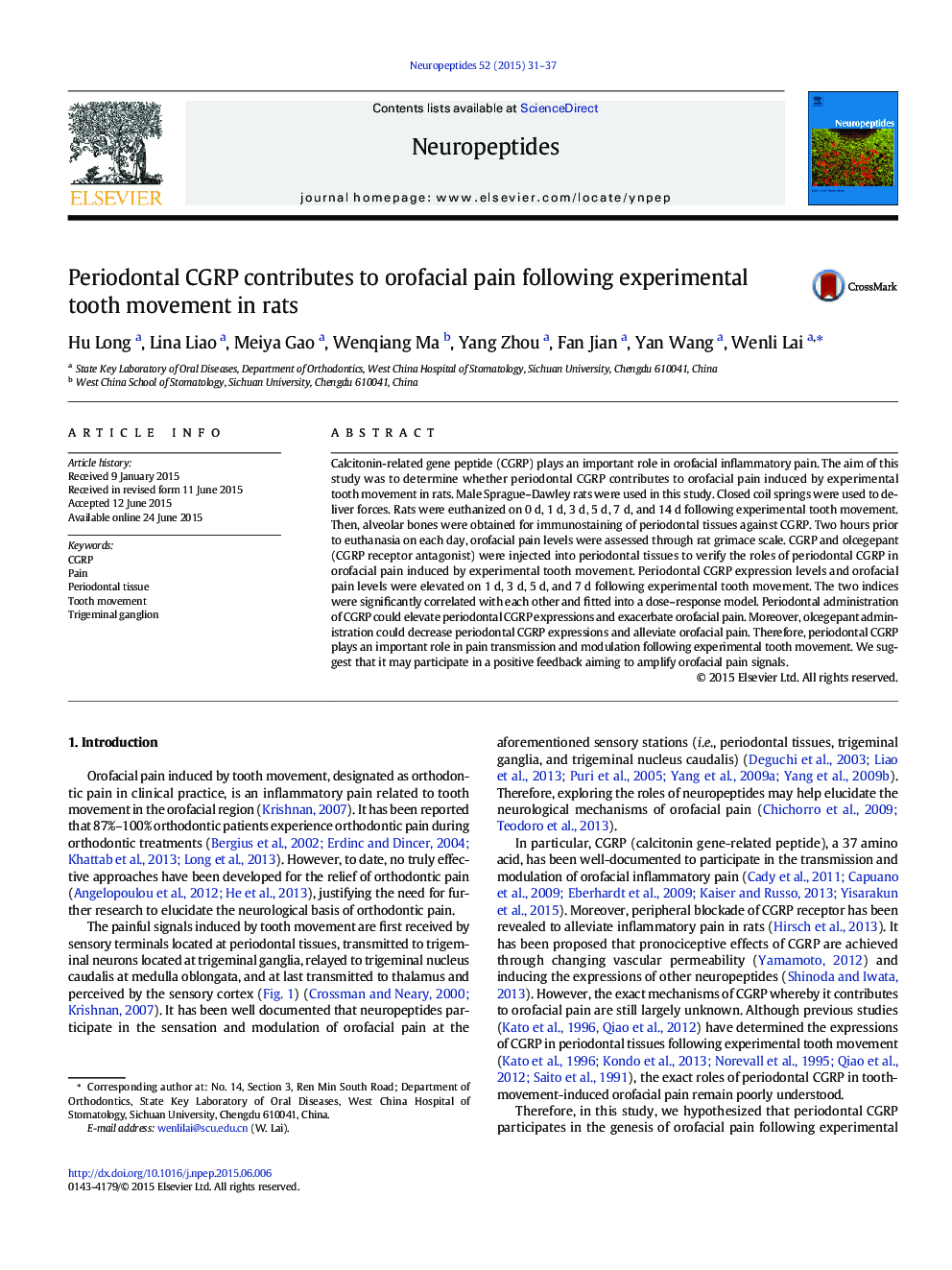| کد مقاله | کد نشریه | سال انتشار | مقاله انگلیسی | نسخه تمام متن |
|---|---|---|---|---|
| 2807967 | 1569070 | 2015 | 7 صفحه PDF | دانلود رایگان |

• Periodontal CGRP levels and pain levels fitted into a dose–response model.
• Periodontal CGRP contributes to orofacial pain following tooth movement.
• Periodontal CGRP participates in a positive feedback to amplify pain signals.
Calcitonin-related gene peptide (CGRP) plays an important role in orofacial inflammatory pain. The aim of this study was to determine whether periodontal CGRP contributes to orofacial pain induced by experimental tooth movement in rats. Male Sprague–Dawley rats were used in this study. Closed coil springs were used to deliver forces. Rats were euthanized on 0 d, 1 d, 3 d, 5 d, 7 d, and 14 d following experimental tooth movement. Then, alveolar bones were obtained for immunostaining of periodontal tissues against CGRP. Two hours prior to euthanasia on each day, orofacial pain levels were assessed through rat grimace scale. CGRP and olcegepant (CGRP receptor antagonist) were injected into periodontal tissues to verify the roles of periodontal CGRP in orofacial pain induced by experimental tooth movement. Periodontal CGRP expression levels and orofacial pain levels were elevated on 1 d, 3 d, 5 d, and 7 d following experimental tooth movement. The two indices were significantly correlated with each other and fitted into a dose–response model. Periodontal administration of CGRP could elevate periodontal CGRP expressions and exacerbate orofacial pain. Moreover, olcegepant administration could decrease periodontal CGRP expressions and alleviate orofacial pain. Therefore, periodontal CGRP plays an important role in pain transmission and modulation following experimental tooth movement. We suggest that it may participate in a positive feedback aiming to amplify orofacial pain signals.
Figure optionsDownload high-quality image (211 K)Download as PowerPoint slide
Journal: Neuropeptides - Volume 52, August 2015, Pages 31–37